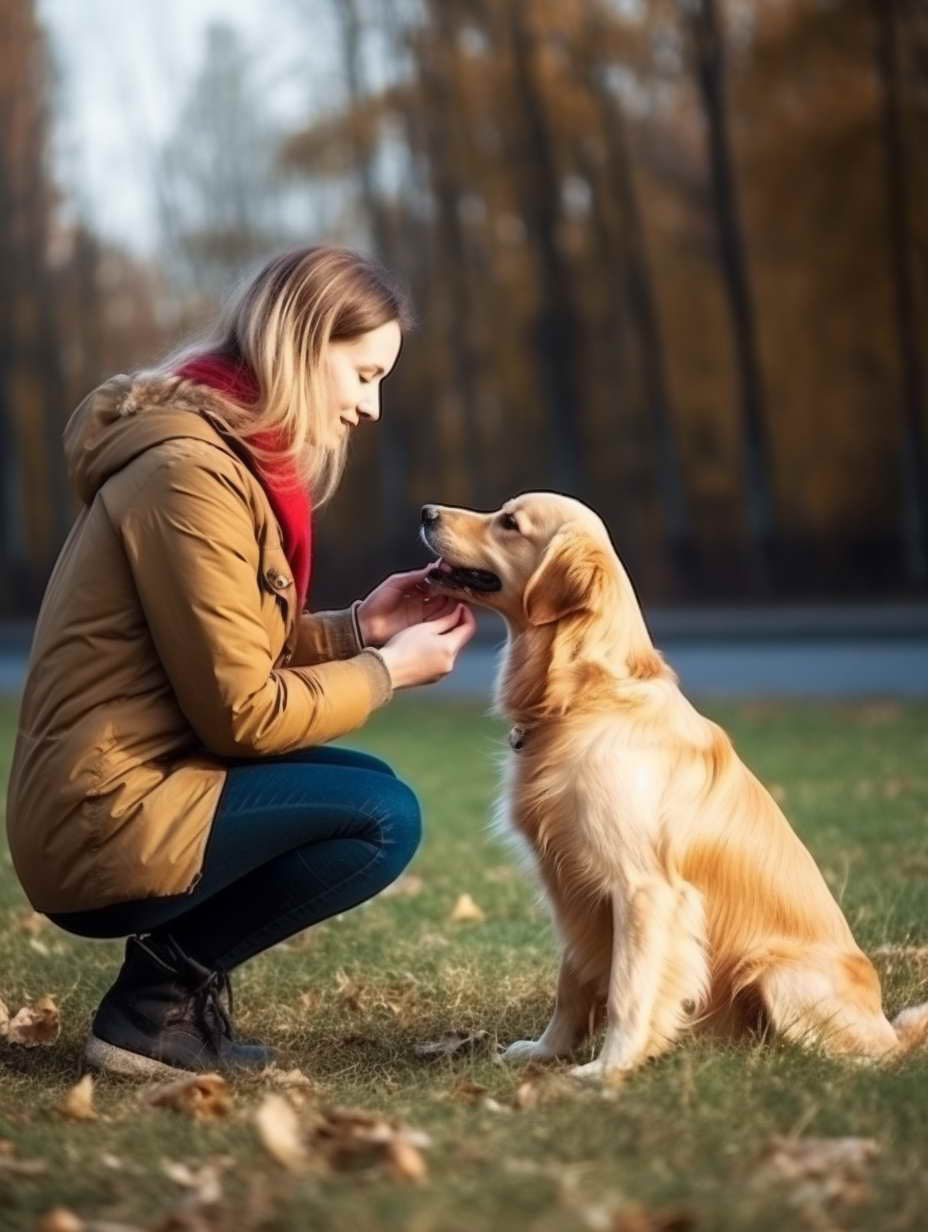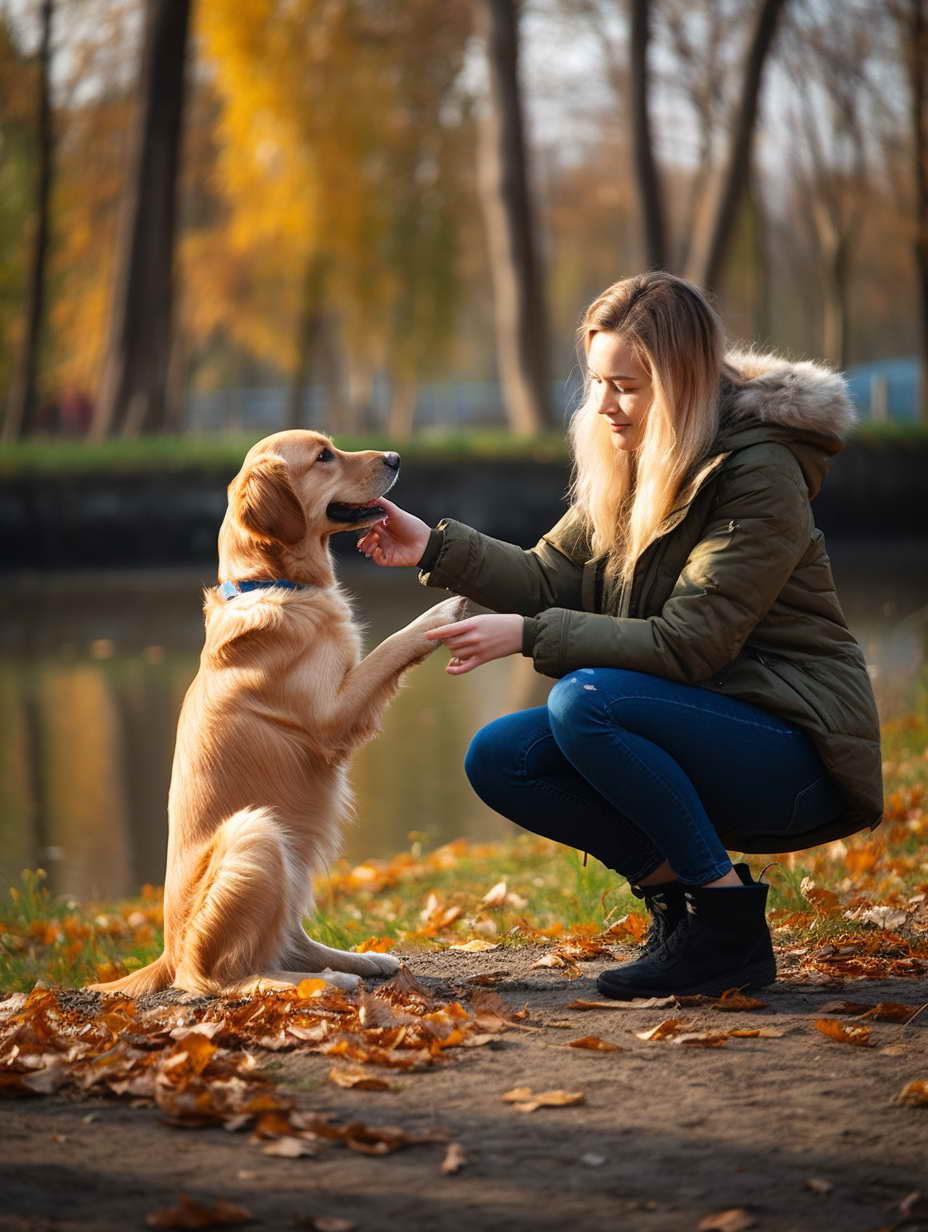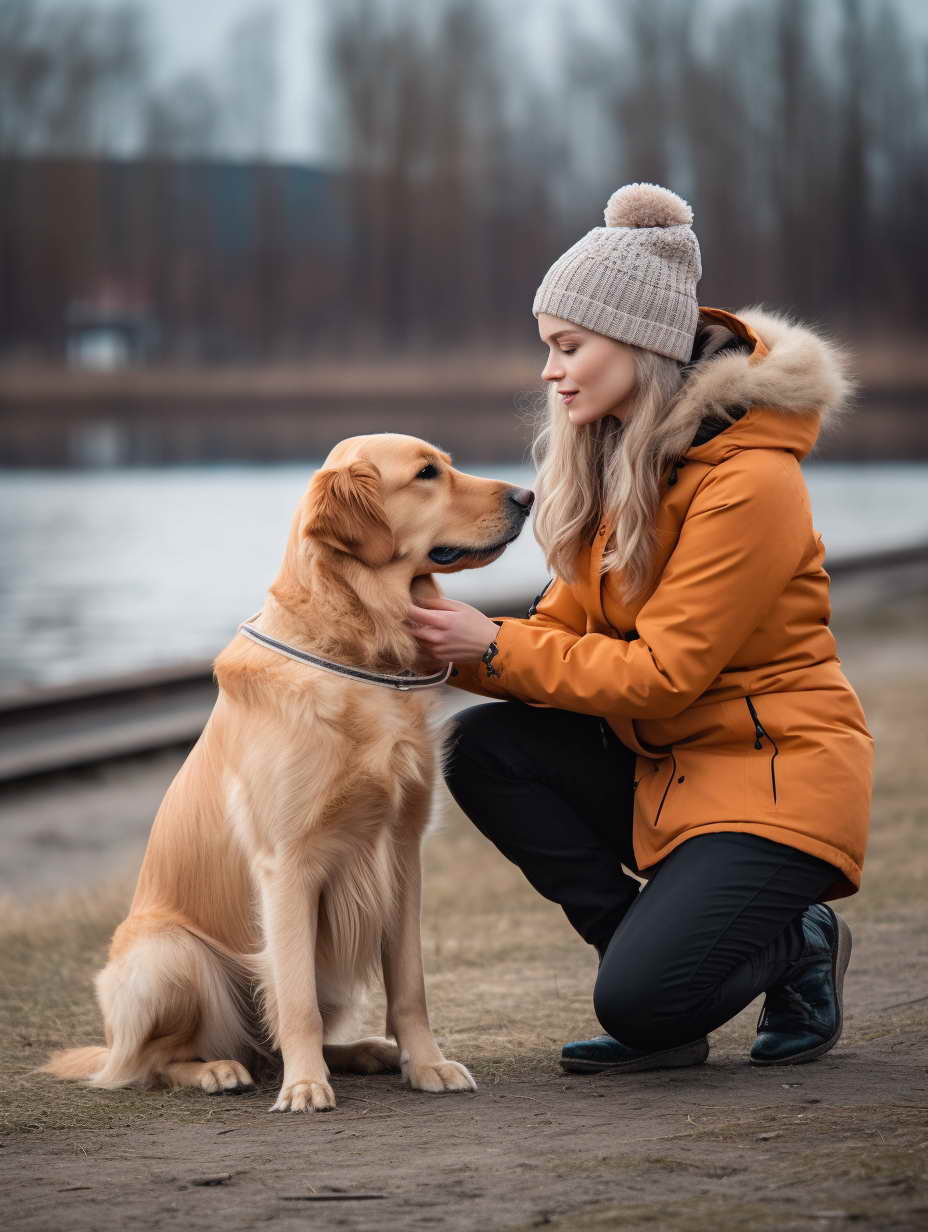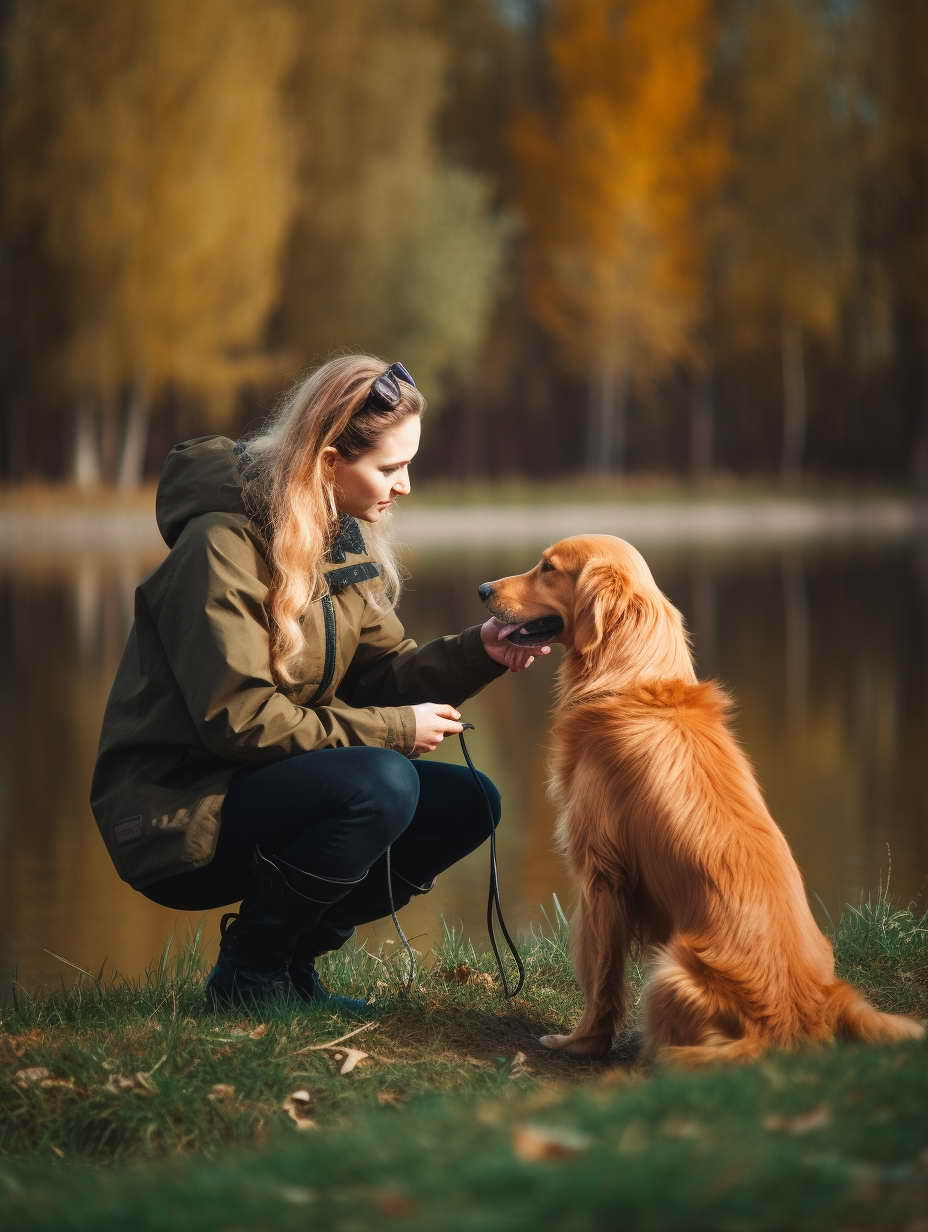What Age To Start Dog Training – A Comprehensive Guide
Introduction
Dog training is a crucial aspect of responsible pet ownership. It not only ensures the safety of your dog and those around them but also strengthens the bond between you and your four-legged companion. One of the most common questions among dog owners is, “What age should I start training my dog?” In this comprehensive guide, we will explore the best practices for dog training and provide insights into the ideal age to embark on this rewarding journey.
What Age To Start Dog Training and Why It’s Important?
The question of when to start dog training is not only important but also highly variable, as it depends on several factors. Here, we’ll delve deeper into the different stages of a dog’s life to provide you with a comprehensive understanding of when and how to initiate training effectively.

Early Puppyhood: The Foundation Stage
The early stages of a puppy’s life are a critical period for laying the groundwork for their future behavior and training. During this phase, puppies are like sponges, absorbing information and experiences at a remarkable rate. Here’s a closer look at the key aspects of training during early puppyhood:
1. Puppies Aged 7-8 Weeks
At this delicate age, puppies are still adjusting to their new homes and the world around them. This is the optimal time to commence training, as they are eager to explore and learn. Here’s what you should focus on:
A. Potty Training: Begin with housebreaking. Establish a designated area for your puppy to relieve themselves, and take them to this spot regularly. Be patient and consistent, rewarding them with praise and treats when they do their business in the right place. Keep in mind that accidents are part of the learning process, so avoid scolding.
B. Name Recognition: Teach your puppy to respond to their name. Use it consistently and positively. Whenever they react to their name, reward them with a treat and affection. This sets the stage for effective communication.
C. Crate Training: Introduce your puppy to a crate, making it a comfortable and safe space. This is not only useful for housebreaking but also for ensuring your puppy doesn’t get into mischief when unsupervised. Gradually increase the time your puppy spends in the crate to help them adjust.
D. Socialization: While it’s important to start socializing your puppy with people and other dogs, be cautious about where you expose them, especially before they have completed their vaccinations. Puppy socialization classes or controlled playdates with other vaccinated puppies can be beneficial.
2. Puppies Aged 12-16 Weeks
As your puppy matures, their ability to learn and follow commands increases. It’s time to build on the foundation you’ve laid in the earlier weeks. Here’s what you can focus on during this stage:
A. Basic Commands: Introduce basic commands like ‘sit,’ ‘stay,’ ‘come,’ and ‘down.’ Use positive reinforcement techniques to reward your puppy for obeying these commands. Short, frequent training sessions are effective, as puppies have short attention spans.
B. Leash Introduction: Begin leash training to get your puppy used to walking on a leash. Start in a quiet, distraction-free environment, and gradually expose them to busier settings as they become more comfortable.
C. Handling and Grooming: Get your puppy accustomed to being handled, including brushing, nail trimming, and ear cleaning. This helps them feel at ease during grooming sessions later on.
D. Positive Social Experiences: Continue socializing your puppy with other dogs and people. Controlled interactions with other dogs in safe environments are crucial for their development.

Adolescence: Building on the Foundation
Adolescence marks a significant phase in your dog’s development. Just like human teenagers, adolescent dogs undergo changes in behavior, energy levels, and independence. Building on the foundation of training established in early puppyhood, it’s essential to adapt your training techniques to address the specific challenges and opportunities that come with this stage.
1. Puppies Aged 6-12 Months
As your puppy enters adolescence, typically between six and twelve months of age, you’ll notice some distinct behavioral changes. Here’s how you can navigate this phase effectively:
A. Reinforce Basic Commands: Continue to reinforce the basic commands your puppy learned during early puppyhood. Consistency is key during this stage, as some dogs may start to test boundaries. By consistently rewarding good behavior, you reinforce the importance of following commands.
B. Advanced Obedience Training: Consider introducing more advanced obedience training during this stage. You can work on commands such as ‘heel,’ ‘leave it,’ and ‘drop it.’ These commands can be especially useful as your dog becomes more curious and independent.
C. Leash Manners: If you haven’t already, focus on leash manners. Adolescent dogs may become more excitable during walks, so teaching them to walk calmly on a leash is essential for enjoyable walks.
D. Addressing Adolescence Challenges: Adolescence can bring about challenges such as increased stubbornness, selective hearing, and a desire to explore. Patience is crucial. Instead of resorting to punishment, continue to use positive reinforcement to motivate your dog to behave appropriately.
E. Mental Stimulation: Keep your adolescent dog mentally stimulated. Puzzle toys, interactive games, and obedience training can help channel their energy into positive activities. Mental stimulation is just as important as physical exercise.
2. Avoiding Regression
It’s not uncommon for dogs to exhibit some regression in their training during adolescence. They might temporarily forget commands or exhibit behaviors they haven’t shown since puppyhood. Stay patient and consistent in your training efforts, and most dogs will eventually mature into well-behaved adults.
A. Consistency: Ensure that all family members are on the same page regarding training and expectations. Consistency in commands and rewards is essential.
B. Positive Reinforcement: Continue to rely on positive reinforcement, such as treats, praise, and affection, to encourage desired behaviors.
C. Seek Professional Help if Needed: If your dog’s behavior becomes problematic or challenging to handle, don’t hesitate to seek the guidance of a certified dog trainer or behaviorist. They can provide expert advice and tailored training plans.

Adulthood: Refining Skills
As your dog transitions into adulthood, which typically occurs around one year of age for most breeds, it’s time to shift your training focus from foundational skills to refining their abilities and catering to their unique interests and personality. Here’s how you can make the most of this stage in your dog’s life:
1. Dogs Aged 1 Year and Older
By the time your dog reaches adulthood, they should have a solid foundation in basic obedience. Now, you can consider more specialized training based on your dog’s individual characteristics and your goals as a pet owner:
A. Specialized Training: Assess your dog’s interests and abilities. Some dogs thrive in agility or obedience competitions, while others excel in therapy work or search and rescue. Tailor your training to suit your dog’s inclinations, providing mental stimulation and a sense of purpose.
B. Advanced Obedience: Continue to refine your dog’s obedience skills. Work on perfecting commands such as ‘heel,’ ‘stay,’ and ‘come,’ even in distracting environments. Consistency remains essential in reinforcing these behaviors.
C. Off-Leash Training: If your dog enjoys off-leash activities, consider off-leash training. Ensure your dog has a reliable recall so you can trust them to return to you when called, even in open spaces.
D. Problem Solving: Address any lingering behavioral issues or challenges that may have developed over time. Seek the guidance of a professional dog trainer or behaviorist if needed.
E. Mental Stimulation: Keep your adult dog mentally engaged. Puzzle toys, scent games, and advanced training exercises can provide the mental stimulation they need to stay sharp and content.
F. Socialization: Continue socializing your adult dog with other dogs and people. Regular positive interactions help prevent behavioral issues and ensure your dog remains friendly and well-adjusted.
G. Health and Fitness: Maintain your dog’s physical health through regular exercise and a balanced diet. A healthy body supports a healthy mind, enhancing their ability to learn and follow commands.
2. Lifelong Learning
It’s important to recognize that dogs are lifelong learners. Regardless of age, they benefit from ongoing training, mental stimulation, and socialization. Regular training sessions, even if they’re brief, can help reinforce good behavior and strengthen your bond.
A. Short, Frequent Sessions: Short, frequent training sessions are often more effective than long, infrequent ones. Aim for 10-15 minute sessions several times a day to keep your dog engaged and motivated.
B. Positive Reinforcement: Continue to use positive reinforcement techniques, rewarding your dog for desired behaviors. Positive reinforcement builds trust and maintains a positive relationship between you and your dog.
C. Adapt to Changing Needs: As your dog ages, their needs and abilities may change. Be adaptable in your training approach, accommodating any physical limitations or health concerns that may arise.
Frequently Asked Questions
Can I start training an older dog?
Yes, it’s never too late to train a dog. While puppies are like blank slates, older dogs can still learn new tricks. Be patient and use positive reinforcement to motivate them.
What if my dog has behavioral issues?
Professional help from a certified dog trainer or behaviorist may be necessary for serious behavioral problems. Seek expert advice to address issues like aggression or severe anxiety.
Is it okay to use punishment in dog training?
Positive reinforcement is generally more effective and humane than punishment. Reward good behavior and ignore or redirect undesirable actions. Harsh methods can damage the trust between you and your dog.
How often should I train my dog?
Short, frequent training sessions are more effective than long, infrequent ones. Aim for 10-15 minutes several times a day, keeping the training positive and engaging.
Should I enroll my dog in obedience classes?
Obedience classes can be a great way to socialize your dog and learn alongside other pet owners. Look for reputable trainers or facilities in your area.
Can I train my dog on my own?
While professional guidance can be beneficial, many dog owners successfully train their pets at home. There are numerous online resources and books available to help you get started.
Conclusion
In conclusion, the age to start dog training varies but generally begins in early puppyhood. Building a strong foundation of obedience, socialization, and positive reinforcement is key to a well-behaved and happy canine companion. Remember that every dog is unique, so tailor your training approach to their individual needs and temperament.

Leave a Reply